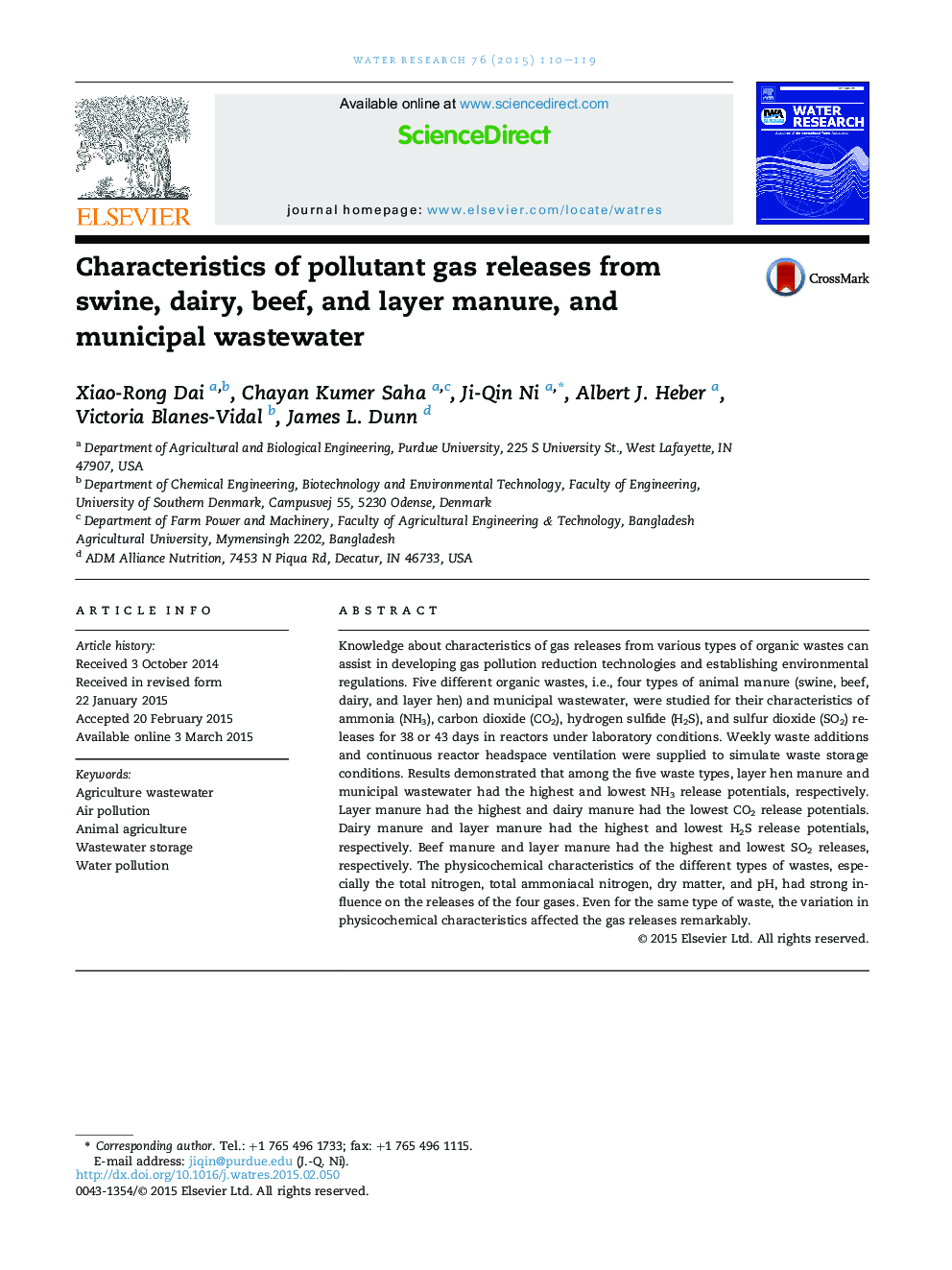| Article ID | Journal | Published Year | Pages | File Type |
|---|---|---|---|---|
| 6366158 | Water Research | 2015 | 10 Pages |
Abstract
Knowledge about characteristics of gas releases from various types of organic wastes can assist in developing gas pollution reduction technologies and establishing environmental regulations. Five different organic wastes, i.e., four types of animal manure (swine, beef, dairy, and layer hen) and municipal wastewater, were studied for their characteristics of ammonia (NH3), carbon dioxide (CO2), hydrogen sulfide (H2S), and sulfur dioxide (SO2) releases for 38 or 43 days in reactors under laboratory conditions. Weekly waste additions and continuous reactor headspace ventilation were supplied to simulate waste storage conditions. Results demonstrated that among the five waste types, layer hen manure and municipal wastewater had the highest and lowest NH3 release potentials, respectively. Layer manure had the highest and dairy manure had the lowest CO2 release potentials. Dairy manure and layer manure had the highest and lowest H2S release potentials, respectively. Beef manure and layer manure had the highest and lowest SO2 releases, respectively. The physicochemical characteristics of the different types of wastes, especially the total nitrogen, total ammoniacal nitrogen, dry matter, and pH, had strong influence on the releases of the four gases. Even for the same type of waste, the variation in physicochemical characteristics affected the gas releases remarkably.
Related Topics
Physical Sciences and Engineering
Earth and Planetary Sciences
Earth-Surface Processes
Authors
Xiao-Rong Dai, Chayan Kumer Saha, Ji-Qin Ni, Albert J. Heber, Victoria Blanes-Vidal, James L. Dunn,
